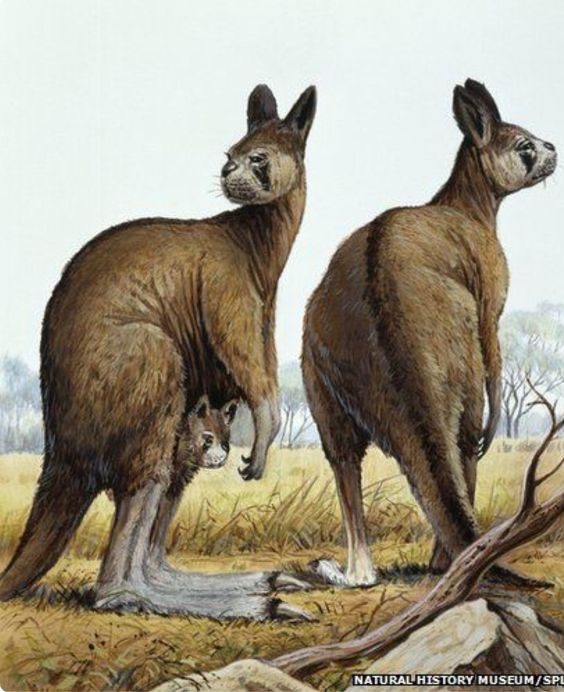Long ago, around the end of the last Ice Age, a giant kangaroo species roamed the tropical mountain forests of New Guinea (a country in Oceania). A recently published study reveals that this kangaroo is not closely related to modern Australian marsupials. It represents a primitive kangaroo species previously unknown and was exclusive to New Guinea.
Australia was once home to all the giant animals known as megafauna, until most of them went extinct around 40,000 years ago. These megafauna coexisted with the animals we now associate with the Australian bush—kangaroos, koalas, crocodiles, and similar species. They were extremely large.
The giant marsupials known as Phascolonus—the short-faced kangaroo standing 2.5 meters tall—and Diprotodon optatum, which could weigh up to 3 tons, were the largest marsupials ever. In fact, some megafauna species in Australia, such as the red kangaroo, emu, and cassowary, still exist today. The megafauna fossils of New Guinea have been less thoroughly studied compared to those in Australia. Although many mysteries remain, the fossil record of New Guinea has suggested the existence of strange and fascinating animals.
Paleontologists have conducted several sporadic expeditions and excavations in New Guinea, including digs in the 1960s, 70s, and 80s. During an excavation in the early 1970s led by Mary-Jane Mountain, they discovered two jaws of an extinct giant kangaroo. Young researcher Tim Flannery named this species Protemnodon nombe.
The fossils are estimated to be around 20,000 to 50,000 years old, found at a site in the central highlands of Papua New Guinea. This site also yielded fossils of another kangaroo species, along with giant four-legged marsupials known as diprotodontids.

This strange kangaroo is a newly discovered primitive species. (Illustrative image).
Protemnodon and the researchers made a surprising discovery. This strange kangaroo is not a species within the Protemnodon genus (which once lived throughout Australia, from Kimberley to Tasmania), but is a much more primitive and previously unknown species. Notably, its unusual molar with a curved enamel peak distinguishes it from all other known marsupials. The biologists classified this species into an entirely new genus, unique to New Guinea, and renamed it Nombe nombe.
The findings suggest that Nombe may have evolved from an ancient kangaroo form that migrated to New Guinea from Australia during the late Miocene, around 5-8 million years ago. At that time, the islands of New Guinea and Australia were connected by a land bridge due to lower sea levels—whereas today they are separated by the Torres Strait. This connecting bridge also allowed early Australian mammals, including megafauna, to migrate to the tropical forests of New Guinea. When the Torres Strait flooded again, these animal populations became isolated from their Australian relatives and evolved separately to adapt to the tropical and mountainous environment of New Guinea. The species Nombe is considered a descendant of one of the ancient kangaroo lineages.
This muscular and squatting animal lived in a diverse tropical mountain forest with dense trees and a closed canopy. It evolved to eat tough leaves from trees and shrubs, resulting in thick jaw bones and strong chewing muscles. This species is currently known only from two fossilized lower jaws. Did Nombe hop like modern kangaroos? Why did it go extinct?
Current studies reveal very little about the unique animal life of New Guinea known outside the island, although it is intriguing and curious. Few Australians think about what is happening on the island just across the strait.
The Papua New Guinea Museum in Port Moresby currently houses many fossils of these remarkable animals, such as the large echidna with a long snout, some weighing up to 15 kg. There are also dwarf cats and various species of kangaroos, tree kangaroos, and other marsupials that do not exist in Australia—along with many other species in the fossil record.
Most of us tend to think of these animals as unique to Australia, but they have fascinating forms in New Guinea. Australian biologists find it strange and exciting to see these animals that have evolved into new and bizarre forms in a different landscape. The species N. nombe could breathe new life into paleontology in New Guinea.
These new discoveries from this study hope to inspire young local biology students to continue exploring new fossils. If fortunate, we might obtain a complete skeleton of this special Nombe species.





















































